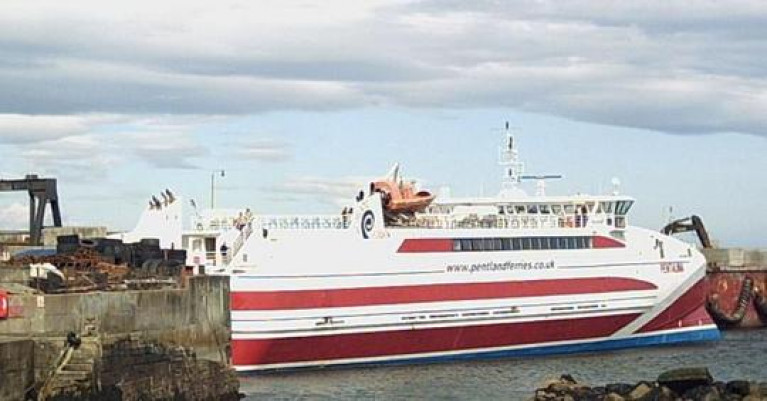Displaying items by tag: CalMac charter
CalMac Charter-in Manx Freight-Ferry to Assist During Closure of Uig Harbour on Isle of Skye
In a news update issued by Transport Scotland, an additional 'freight' ferry, the MV Arrow has been chartered to CalMac (Afloat adds from the Isle of Man Steam Packet) to assist island communities during planned works to Uig Harbour on the Isle of Skye.
The MV Arrow (which the Steam Packet acquired in recent months), will join the CalMac fleet as part of the revised programme, which was supported with additional funding from the Scottish Government and has cut the outage down from 24 weeks to 14 weeks.
Minister for Transport Jenny Gilruth said: “I’m pleased we have been able provide funding to charter the MV Arrow to assist during these vital works to upgrade Uig Harbour.
“The Scottish Government has already shown its commitment to supporting affected communities by funding the revised programme of works, and the addition of the MV Arrow is another measure to help reduce disruption to ferry travellers, freight customers and the delivery of supplies.
“We appreciate that any level of disruption is not welcome, but this project is vital to improving ferry services and the harbour experience in Uig in the longer term.”
CalMac (scroll down to 'News' section) are currently working on timetables for the MV Arrow and will confirm the details in due course.
Robbie Drummond, CalMac CEO, said: “We have been working closely with Transport Scotland to investigate the feasibility of leasing extra vessels and the addition of the MV Arrow is extremely welcome news.
“The Uig closure will be a challenging period for our customers and the chartering of MV Arrow will help provide much-needed resilience during the closure.”
Scottish Union Officials Welcome Scrapping of CalMac's Charter of Catamaran on Arran Route
Scottish ferries union RMT has welcomed the news that CalMac's chartered catamaran Pentalina has been scrapped after raising safety concerns.
As The Herald (also reported) last week, the Pentalina had been taken out of commercial service after the union called for a safety re-inspection.
The union had raised serious safety concerns with the regulator, the Maritime and Coastguard Agency, over the modifications made to the Pentalina.
RMT General Secretary, Mick Lynch said: “We of course recognise the difficulties caused to people and businesses by the ongoing failure of the Scottish Government’s vessel procurement programme. But bringing an unsafe vessel onto Clyde and Hebrides ferry services is in no one’s interest.
For more on the Ardrossan-Brodick (Arran) route on the Firth of Clyde click here.





























































